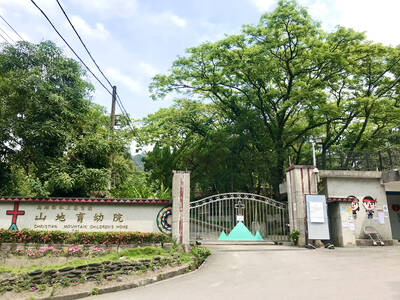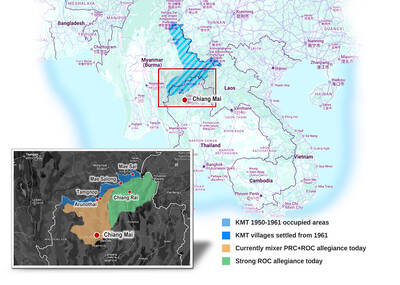Britten's War Requiem of 1962 was something of a hit in its day, at least in classical music terms. There were dissenting voices, but generally it was felt that it boldly embodied anti-war sentiments at the Cold War's height. The Cuban Missile Crisis was to surface only months after its premiere (at the dedication of the UK's rebuilt Coventry Cathedral, destroyed by enemy bombing in World War II). And the horrors of the Vietnam War were still to come, and with them the more populist protests from the hippie musical flowering of that extraordinary era. But Britten’s creation could be argued to have set the tone early on for what was soon to become a worldwide anti-war movement.
Video Artists International has now issued the TV film of its American premiere, at Tanglewood in what was then called the Berkshire Festival in 1963, with Erich Leinsdorf conducting. It’s in black-and-white, and the stilted enunciation forced on the soloists by the idiom was soon to be rejected out of hand by the emerging youth movement. Even so, the cumulative power of the War Requiem is undeniable.
Fury at the hideous brutality of all wars is its dominant motivation. Britten was a lifelong pacifist and he’d originally planned a requiem for Mahatma Ghandi, the pioneer of passive resistance rather than violent protest. But this commission proved irresistible, and for it he used the material he already had in mind admirably.
The use of Wilfred Owen’s World War I war poetry is enormously effective. Indeed, it’s these poems that really drive the work, with the music forcing them into the consciousness one more time. Owen’s retelling of the story of Abraham and Isaac, with Abraham not sacrificing the ram at all, but Isaac “and half the seed of Europe, one by one,” is absolutely devastating in Britten’s setting. And the way the work begins by alternating the poems with the Latin text of the Mass for the Dead, and then has the two going on simultaneously, is extremely strong.
This 40-year-old version isn’t going to cut much ice with some people. But it’s an historic re-issue, and all the more important in an age when there are wars being waged with far less public protest than the artists of the 1960s hurled at their politicians.
The BBC TV Great Composers features of 1997 were re-issued on DVD by the US company Kultur (www.kultur.com) in 2006. Seven composers — Bach, Mozart, Beethoven, Wagner, Tchaikovsky, Mahler and Puccini — are each the subject of a 59-minute film. Of the five I’ve seen (I’ve not yet found Tchaikovsky or Mahler), the most impressive are those dealing with Bach and Mozart.
The format is standard. The life is outlined (with Kenneth Branagh narrating), excerpts of the music are played, and distinguished musicians and commentators give their views. What’s impressive about the Mozart program is that it manages to give quite a sophisticated analysis of how perspectives on his music have shifted over the last half century, darkening the collective view and at the same time deepening our appreciation of his musical seriousness. (The older view, dating from the 19th century’s embracing of the ambitious world of Romanticism, was that Mozart was delightful but lightweight, a sort of permanent child).
The US musicologist Charles Rosen and the UK opera director Jonathan Miller provide the most searching analyses on both composers. On Bach (who also had to wait until the 20th century for a full appreciation), Rosen marvels at his gigantic achievement from his relative isolation in 18th-century Leipzig. Miller, by contrast, muses on the deeper meaning of the B Minor Mass and the St Matthew Passion — not really dependent on doctrinal belief, he says, but meditations on the mortality common to us all. Our shared mission is to die, he concludes.
Anne-Sophie Mutter and her husband Andre Previn play three Mozart trios with the help of the young cellist Daniel Muller-Schott on a DVD from Deutsche Grammophon. The trios aren’t often heard, Previn remarks, speaking in German on a 12-minute bonus track (with subtitles in Chinese, English, Spanish and French). And unfortunately they don’t indeed prove very memorable. Mozart wrote a huge amount, and he necessarily wrote some things fast, either for students, for amateur family music-making, or simply to make some much-needed quick money.
Finally, one more concert from Taiwan’s wonderful Evergreen Symphony Orchestra. This one was played in Taipei on Sept. 15 last year, with the current music director, Gernot Schmalfuss, already at the helm. Included in the long program are Beethoven’s First Symphony, Bartok’s Concerto for Orchestra, Dvorak’s Rondo for Cello and Orchestra (with Sun Hsiao-mei (孫小媚) as soloist), five Schubert songs sung by Liau Chong-boon (廖聰文), and orchestral versions of two Taiwanese folk songs.
It’s a pity the Schubert songs,
performed in their original German, don’t have subtitles. But Liau gives a brief onstage introduction to each of them — probably more of a challenge to a
professional singer than the performances themselves. The entire DVD, almost two hours long, is a delight, as are all these Evergreen concert recordings.

May 18 to May 24 Pastor Yang Hsu’s (楊煦) congregation was shocked upon seeing the land he chose to build his orphanage. It was surrounded by mountains on three sides, and the only way to access it was to cross a river by foot. The soil was poor due to runoff, and large rocks strewn across the plot prevented much from growing. In addition, there was no running water or electricity. But it was all Yang could afford. He and his Indigenous Atayal wife Lin Feng-ying (林鳳英) had already been caring for 24 orphans in their home, and they were in

President William Lai (賴清德) yesterday delivered an address marking the first anniversary of his presidency. In the speech, Lai affirmed Taiwan’s global role in technology, trade and security. He announced economic and national security initiatives, and emphasized democratic values and cross-party cooperation. The following is the full text of his speech: Yesterday, outside of Beida Elementary School in New Taipei City’s Sanxia District (三峽), there was a major traffic accident that, sadly, claimed several lives and resulted in multiple injuries. The Executive Yuan immediately formed a task force, and last night I personally visited the victims in hospital. Central government agencies and the

Australia’s ABC last week published a piece on the recall campaign. The article emphasized the divisions in Taiwanese society and blamed the recall for worsening them. It quotes a supporter of the Taiwan People’s Party (TPP) as saying “I’m 43 years old, born and raised here, and I’ve never seen the country this divided in my entire life.” Apparently, as an adult, she slept through the post-election violence in 2000 and 2004 by the Chinese Nationalist Party (KMT), the veiled coup threats by the military when Chen Shui-bian (陳水扁) became president, the 2006 Red Shirt protests against him ginned up by

As with most of northern Thailand’s Chinese Nationalist Party (KMT) settlements, the village of Arunothai was only given a Thai name once the Thai government began in the 1970s to assert control over the border region and initiate a decades-long process of political integration. The village’s original name, bestowed by its Yunnanese founders when they first settled the valley in the late 1960s, was a Chinese name, Dagudi (大谷地), which literally translates as “a place for threshing rice.” At that time, these village founders did not know how permanent their settlement would be. Most of Arunothai’s first generation were soldiers